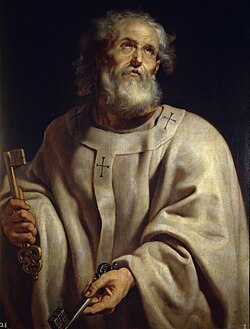This page proposes to describe the meaning of Pedro, and also the origin of the name.
You will see that the meaning of the name is related to foundation or stone, especially important for the religious character.
At the end of the page, we also have the historical references involving Pedro, further enhancing its meaning. You are also invited to participate in the comments section at the bottom of the page, recording what you think about the meaning of Pedro and his origin.
You can also detail the personality of the Pedro that you know.
As we will see, the name Pedro is a well-known name. Many parents name their children because of its meaning, strong sound and mainly because of the biblical apostle.
See also: List of Biblical Male Names.
Content
Meaning of Pedro

The meaning of Peter is “rock”, or “stone”. The origin of the name Pedro comes from the Latin Petrus.
The name Pedro became popular in Portuguese, as well as Pietro in Italian and Pierre in French. There are also female variations like Pietra and Petra.
Historical reference with the name Pedro

Let’s now visualize the main names whose name is Pedro.
- Saint Peter: According to the bible, his original name was not Peter. He was called Simon. A variant of his original name, Simon Peter, also appears in the book of the Acts of the Apostles (Acts 10:18) and in the II Epistle of Peter (II Peter 1:1). In the Gospel of John, Jesuschanges his name to Peter.
- Peter I of Alexandria was Archbishop of Alexandria between 300 and 311. Considered a saint by the Coptic, Catholic and Orthodox Churches.
- Pedro I, nicknamed “the Just”, “the Cruel” and “the Punisher”, was the King of Portugal and Algarves from 1357 until his death.
- D. Pedro de Noronha was the last king of the 1st Dynasty, he was Archbishop of Lisbon (1424-1452) and one of the most powerful figures in the Court of the first half of the 15th century.
